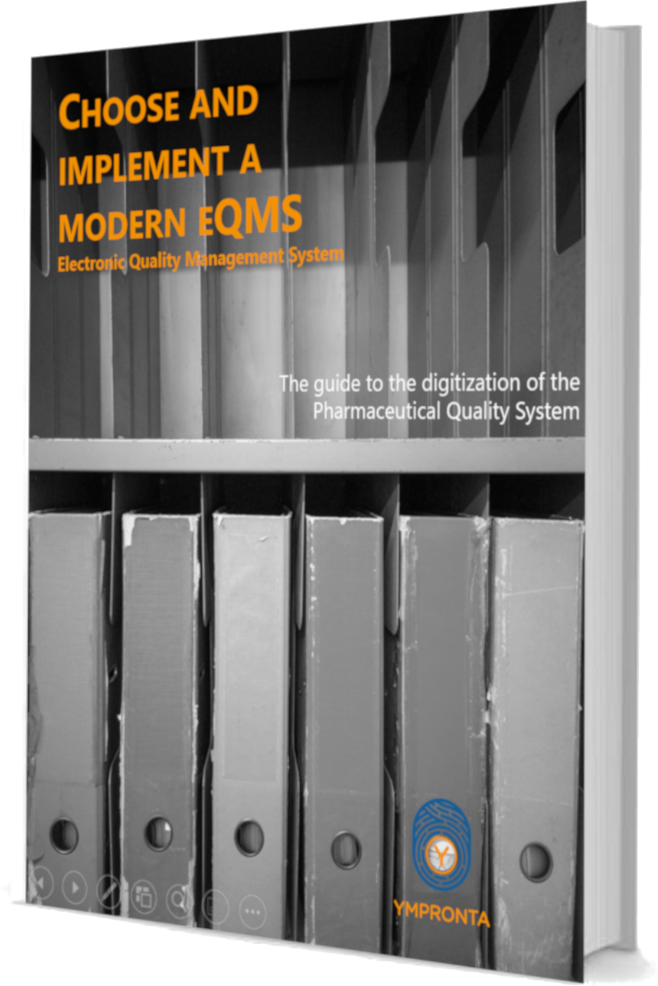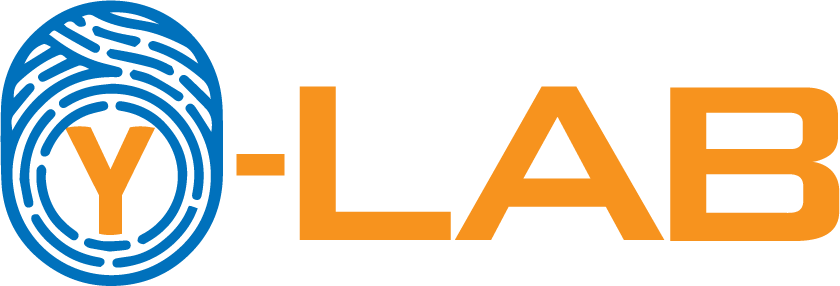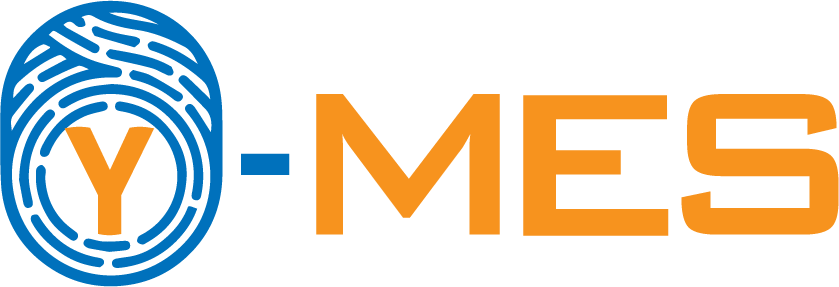"The quality and production volumes are incompatible... if quality improves, volumes decrease, and vice versa... How much can we reduce quality without losing customers?"
Thus begins the famous book "Out of the crisis" by Edwards Deming, the father of the Japanese economic miracle. According to Deming, claims of this kind are the worst misunderstanding a manager or entrepreneur can have. Another belief of Deming was that expecting quality from operators is useless, who must guarantee quality is the system.
We know Deming for the “Plan-Do-Check-Act” cycle, which should be the basis of any quality system. But the PDCA is an extreme simplification of the Deming philosophy, and each industry and company interprets it in their own way. So let's see what the main functionalities of a modern eQMS for the pharmaceutical industry should be.

CLOSED-LOOP QUALITY SYSTEM
We cannot summarize Deming's entire philosophy in one short article, but at least, before we proceed, we can review his 14 fundamental principles.
What is closed-loop quality management?
First we outline the Deming cycle on the pharmaceutical industry, summarizing the path that the drug takes in its life cycle:
Usually it all starts with a project plan that summarizes all the activities;
The development of the specifications of the future process/product follows. This phase requires a lot of input and iteration from different actors;
Once the specifications are approved, they are sent to the regulatory bodies that determine their compliance with the regulations;
With the approved specifications in hand, we proceed with the selection and qualification of suppliers;
The next step is training the operators, internal or external, who will have the task of manufacturing the medicine;
Finally we proceed with the production of the batches and at this point the Quality Control department takes over;
Inevitably, the monitoring of production and the analysis of the batches detect problems, which are recorded as Quality Events;
Events are analyzed, classified and documented in the form of NCMR (Non Conformity Material Report), Deviations or other forms;
CAPA (Corrective and Preventive Actions), SCAR (Supplier Corrective Action Request) are identified which aim to mitigate the consequences and / or eliminate the causes of the problems detected and improve processes
If necessary, the Change Control document is defined and the entire cycle is triggered again, which must be sized according to the extent of the change itself.
Closed-loop quality management essentially means linking the quality process to dati sulle prestazioni rilevati along the entire value chain. The goal is always to improve quality, but monitoring alone is not enough, specific actions are needed.
Each link in this chain is indispensable. It is sufficient that even one element fails and the entire cycle will not be completed. And without a centralized and well-integrated system, these cases are the order of the day.
It often happens, in fact, that the production does not have suitable tools to record an event. When the quality control team notices the problem by discovering it "from the newspapers", and it is only after analysing a batch of documentation that the investigation conducts to discover that the production has already identified and eliminated the root cause without ever communicating anything to other departments.
Even relying only on supplier certificates of analysis and periodic inspections is a risk as there is no visibility into defects and improvement becomes difficult.
These are just few examples of challenges that closed-loop process eQMSs can help with. The keyword is the effective integration between all processes, people and business systems to obtain a closed circuit that feeds itself.
ESSENTIAL COMPONENTS OF THE EQMS
CONTROLLED DOCUMENTs
An internal document, rather than an integrated external DMS, which allows you to manage documents throughout their life cycle (creation, review, approval, reading, archiving). The eQMS must ensure easy and secure classification by document type, department, project, phase, role, person, process, etc. The eQMS must make the user experience as fluid as possible and must guarantee the automatic collection of metadata (audit trail, revisions, versions, etc) in accordance with the regulations and Data Integrity. This will allow the user to forget about these aspects and focus only on the quality of the medicines. Finally, the documentation must be centralized, so that company quality standards are known and accessibili presso tutte le sedi, everywhere in the world. This means that the eQMS must provide powerful collaboration tools such as templates, task management, communication (messaging), prioritization, knowledge sharing.
ROLE BASED TRAINING MANAGEMENT
In addition to being a fundamental step in our cycle, training is a regulatory requirement. The eQMS must provide an integrated training tool structured and specific to the role and qualification of the staff. For each document, procedure, or other objects it must be possible to define the necessary training with a final quiz.
An important component of training management is the automatic and reliable reporting of training performance, as well as the definition of metrics that allow managers to monitor the status and general trend and to highlight any gaps in training.
Complaints management
According to Deming, the customer is the most important link in the distribution chain. This area must not be confused with that of adverse events, for the recording and management of which there are dedicated regulations, procedures, and systems.
The Complaints Management function will be useful above all to Contract Manufacturer companies and must allow the collection, classification, and tracking of complaints, in accordance with the GMPs defined in 21 CFR parts 210 and 211.
This eQMS form must be flexible enough to be adapted to any reality, process, and structure of the complaint. It must provide tools for the collection and analysis of historical data and produce statistical reports that allow us to measure improvements over time.
Quality Events
Deviations, out of specifications, and non-conformities. This tool is similar to the previous one but is intended for internal use only and is an integral part of the continuous improvement plan. It is critical for inspections as the way and accuracy with which these records are recorded and tracked provide immediate visibility into the entire company quality system. Among the fundamental requirements, we can mention the centralized database to ensure transparency at the level of all sites and departments.
The investigative and decision-making tools, together with the fluid integration of the tool into the global cycle, i.e. the possibility of converting the event into the next action, are indispensable components. The automatic collection of events, thanks to the integration with other corporate digital systems, is a great bonus.
CAPA
As a consequence of the Quality Events, CAPAs are proposals, initiatives, specific actions that are defined downstream of the investigative process and aim to mitigate the consequences (corrective actions) or eliminate the causes of the problems identified so that they do not happen in the future (preventive actions). From this perspective, CAPAs can be seen as a tool for introducing rapid changes. If the defined actions become too complex or if they require changes to the validated systems or processes, we proceed with the opening of the Change Control.
Change Control
Change is intrinsic to the principle of continuous improvement, consequently, the Change Control function is one of the key components of a closed-loop quality system. As such it must combine several features such as:
grouping of all the objects impacted by the change such as documents, procedures, training, master batch records, job descriptions, systems involved, processes, suppliers, personnel, etc.
activity plan (modifications, stability studies, tests, etc.) and assignment of these to specific personnel
integrated Risk-Assessment tool
approval flow, versioning
the link with the related Quality Events and investigation results
Global visibility and monitoring of the progress of the change
Every change, like every project, is different from the others and an eQMS must be flexible enough to adapt to each specific situation. Finally, this tool helps show the inspector that you have the situation under control!
Audits & INSPECTIONS
This module is a fundamental tool for the efficient management of the inspection process, the recording and monitoring of observations, and the consequent corrective actions associated with the company's internal audits, as well as supplier audits and regulatory inspections.
Companies undergo numerous audits throughout the year. By multiplying these by the number of systems, documents, processes, and other potential inspection objects, you realize what an opportunity an eQMS represents that provides immediate access to any information and evidence of its compliance status.
SUPPLIER MANAGEMENT
Equipment & Calibrations
All the devices, strumenti di analisi and environmental control systems on which the quality of medicines depends must be validated and consequently must be constantly checked and calibrated in compliance with the regulations. Depending on the type of device, the maintenance mode can change. All these variables, methods, procedures and personal data must be managed by the eQMS in order to help the company plan maintenance activities and keep company assets always validated and ready for use.
Risk Management
Continuous improvement means continuous change. And any change is a risk. Not only. In the process industry, there are variables and risks to be kept under control even during the execution of the validated processes. In other words, quality is subject to ongoing risk, so a modern eQMS must help identify, assess and manage risks across all business areas. Two approaches are possible:
At any time to be able to identify and document potential risks for a specific area/process or quality record
Carry out a complete Risk-Assessment as a well-defined phase of the project
In both cases, the risk register must always be accessible in order to be able to make targeted or global assessments, monitor and track all events related to the listed risks.
conclusions
The pharmaceutical quality system is, therefore, the most dynamic environment since it must and track the continuous changes and improvements of all other critical areas and departments. It is aimed both inside and outside the company. It is a "glue" that integrates all the processes and accompanies the medicine from the R&D phase, to shipment and sometimes to administration. In addition to managing changes in other departments, the eQMS needs to be flexible and able to change and adapt quickly in turn.
Given these requirements, in addition to the functionalities listed above we can mention other universal properties that a modern eQMS must possess:
Extreme flexibility in defining and modifying your workflows. For example, through process designers like BPM or a Workflow manager.
In general a great configurability of processes, modules, reports, data structures and user interfaces
Excellent ability to integrazione with other heterogeneous systems
Ability to define articulated organizational structures, roles and responsibilities
Advanced role-based access and authorization management
Powerful but agile and easy to configure and use analytics, trends, and reporting tool to be able to aggregate and monitor different types of data (training, tests, deviations, SPC, etc)
Goal setting tools, KPI monitoring and fact-based decision making.
Inter and intra company communication tools
In the past, implementing such systems required a lot of resources and time. Today, much of the enthusiasm for closed-loop quality management stems from relatively recent technological advances that have allowed organizations to focus more and more on each element of the cycle.




The essential components of a modern eQMS software for pharmaceutical companies